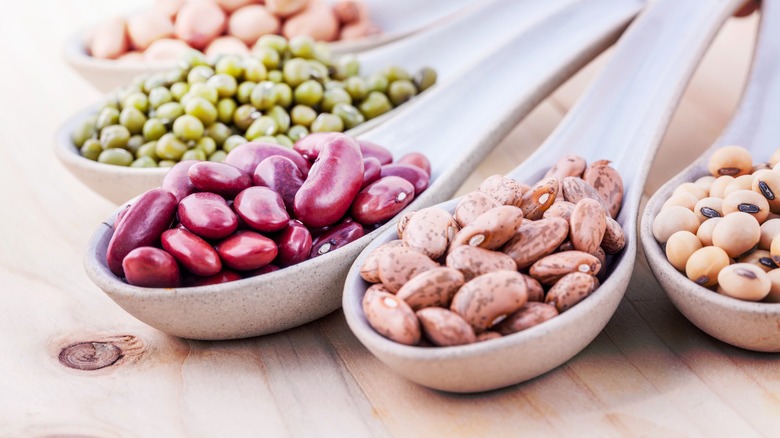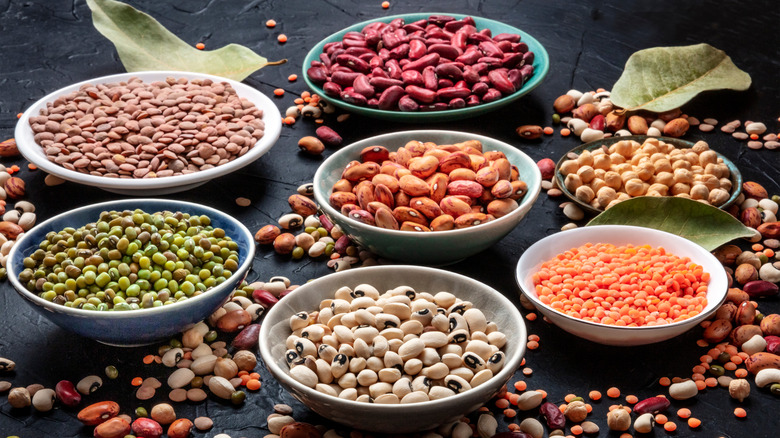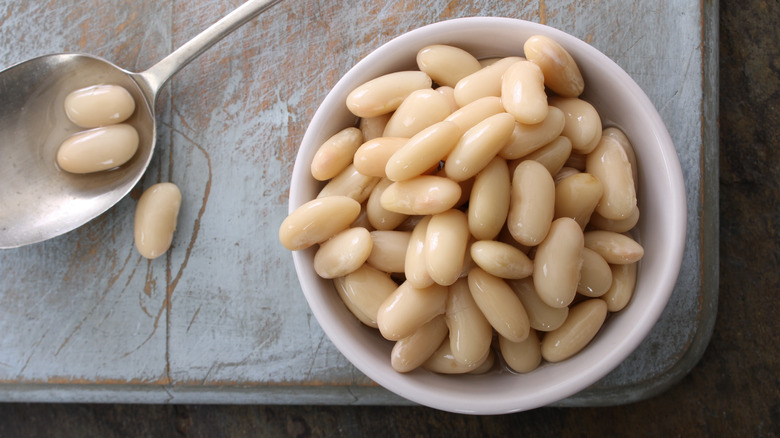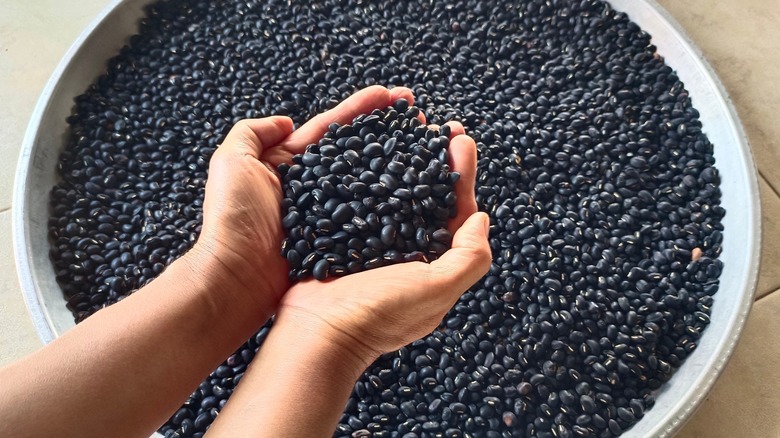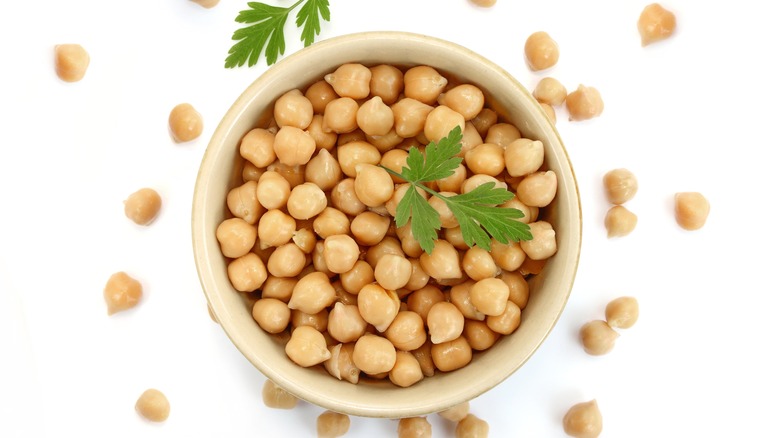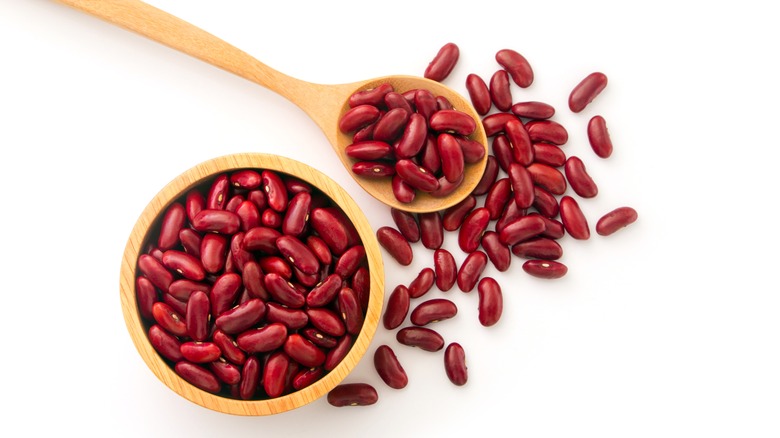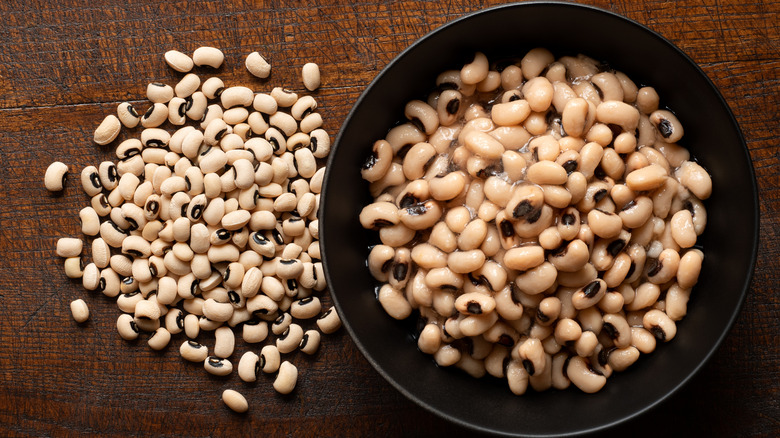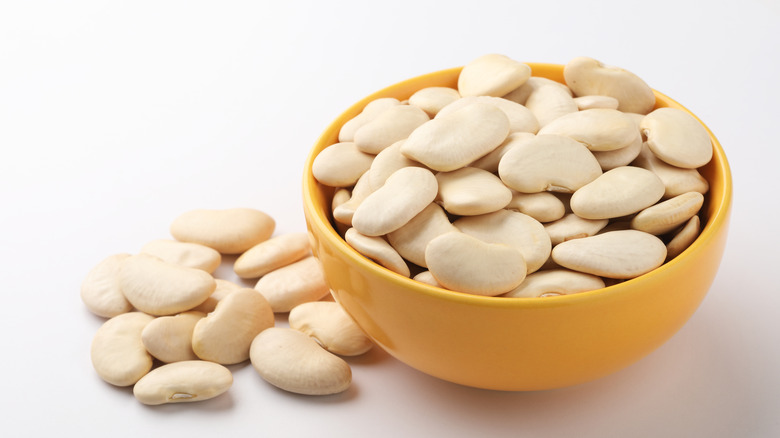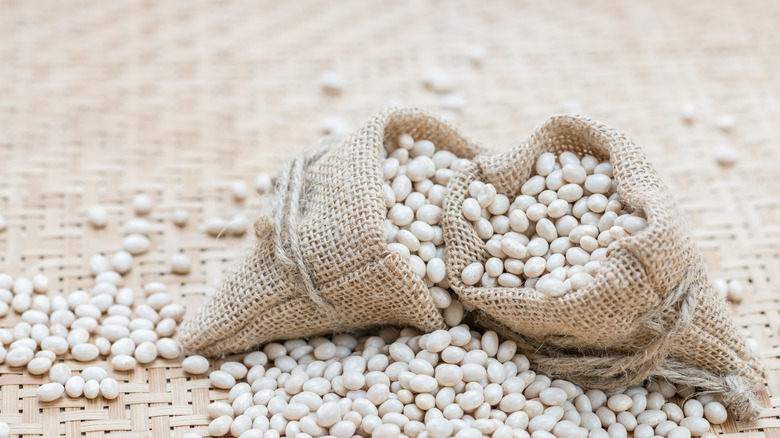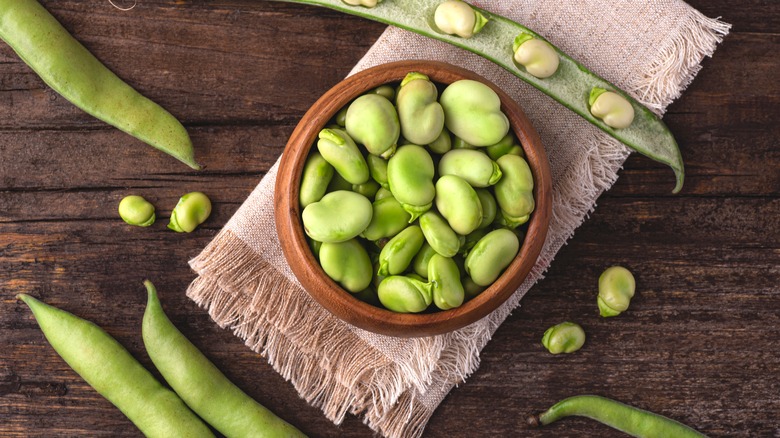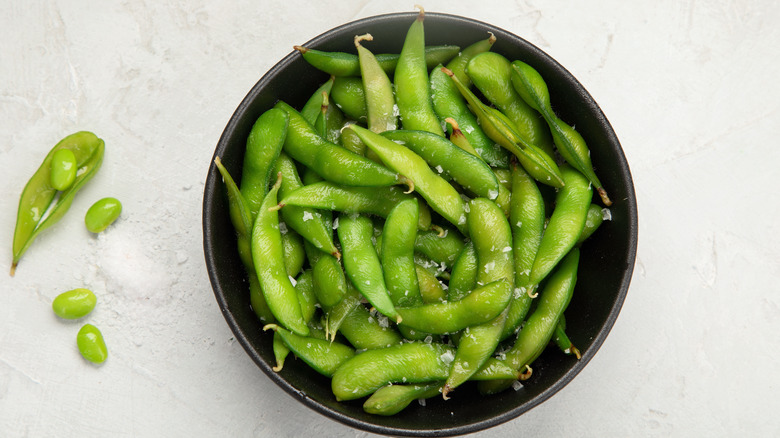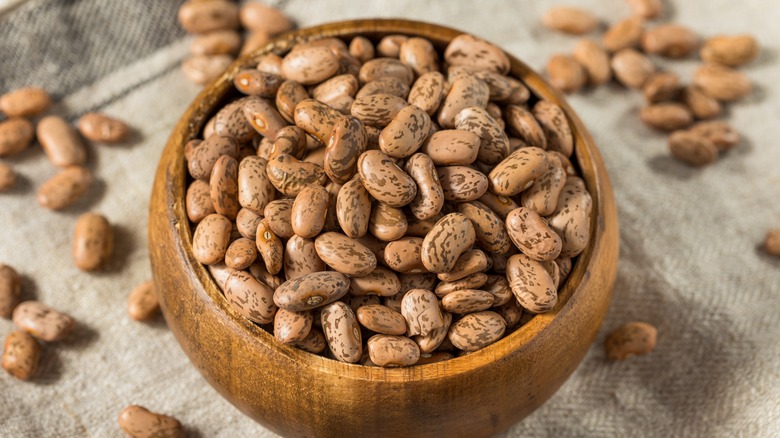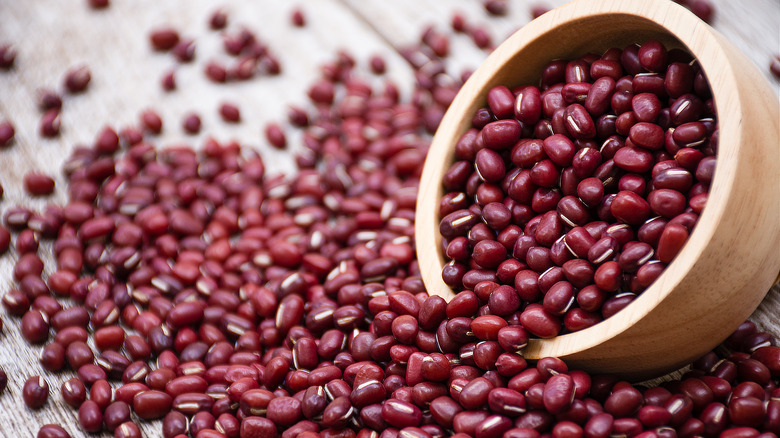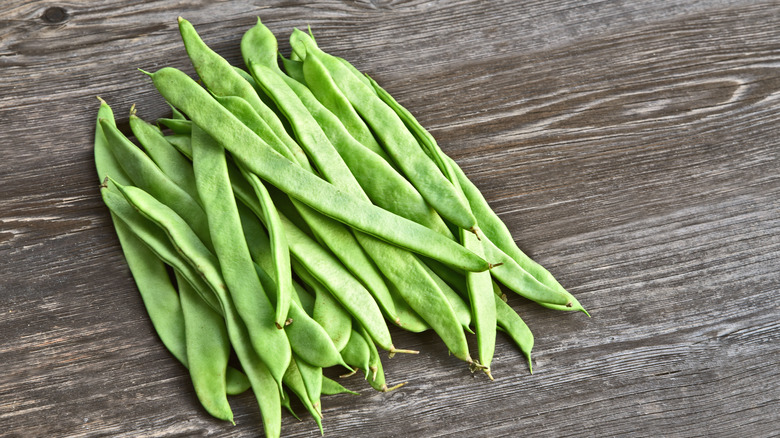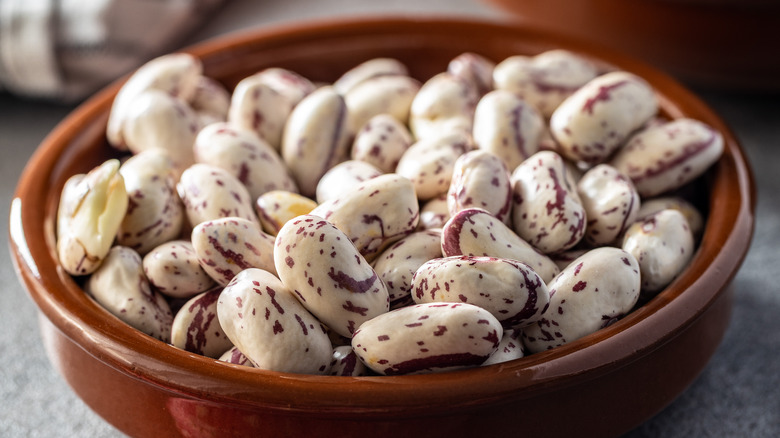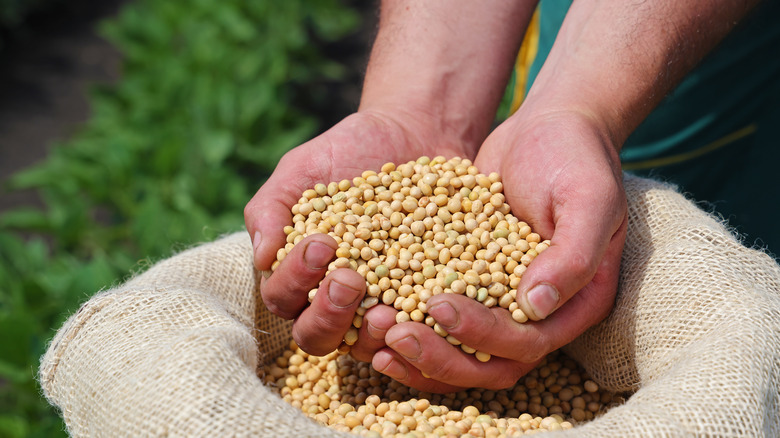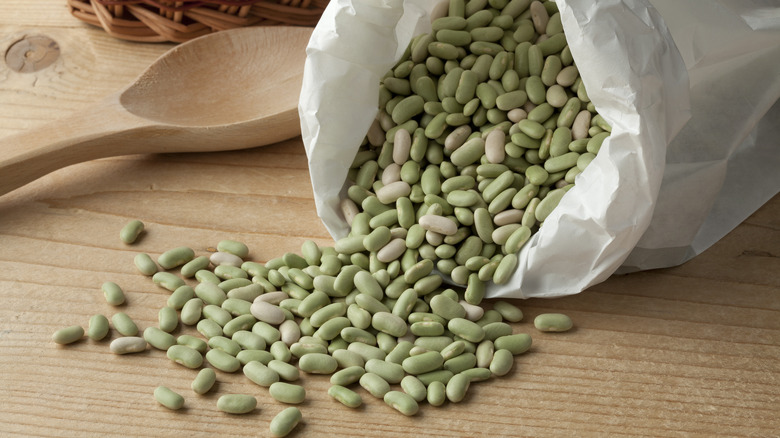A Guide To Beans: 15 Types & What Dishes To Make With Them
Beans are an affordable staple food in many countries across the world, including the United States. They are versatile ingredients that work just as well as a filling side dish as they do taking center stage in an entree. Packed with protein and fiber, beans are a nourishing food that can form the basis of a healthy diet. With many of us moving toward eating more plant-based foods, they provide an ideal healthy alternative to meat products.
With more than 400 varieties of beans grown globally, it can be difficult to know where to start if you want to incorporate more legumes into your weekly meals. We have chosen 15 types of beans that deserve further investigation, from cannellini to borlotti and edamame to chickpeas.
Join us as we uncover the beans you should be adding to your chili, soups, and salads. We reveal the nutritional benefits of these humble vegetables and look at the flavors and textures that make each one unique, allowing you to start adding beans to your culinary endeavors and harness their amazing plant power.
What exactly are beans?
Beans are a culinary staple of many cuisines and star in a wide variety of dishes across the world. Part of the plant kingdom, they belong to the Fabaceae family, more commonly known as legumes. Categorized by growing in a pod with seeds inside, legumes include all varieties of beans, peas, lentils, and, perhaps surprisingly, peanuts.
Legumes are high in protein and trace minerals, making them a crucial component of plant-based diets. They are also high in fiber, with around 8 grams in half a cup. The high fiber content slows down the speed at which their carbohydrates are absorbed, meaning they don't spike your blood sugar in the way that most starchy foods do.
Most beans are available in both canned and dried forms, meaning you can choose either depending on how you want to prepare them. Canned beans are much more convenient, as they are ready to eat and only take a few minutes to prepare. Dried beans, on the other hand, need to be soaked, often overnight, making them unsuitable if you have time constraints. In exchange for convenience, canned beans are more expensive, though they are still an economical food choice.
Given their low cost and wide availability, beans are an excellent healthy staple that will fill you up and prevent you from craving less healthy foods. Whether you're throwing them in a chili, creating hummus, or making a hearty minestrone soup, beans offer versatility and add flavor to numerous meals.
Cannellini beans
One of the most well-known beans is the cannellini bean, a variety of white bean that is popular in Italian cooking. Also known as white kidney beans, they have a creamy texture and nutty flavor that makes them a great addition to soups and stews. They are larger than other white beans, making them a satisfying option to add to a variety of dishes.
Cannellini beans are closely associated with Italian cuisine, and in particular, Tuscany. They feature in Tuscan bean stew, as well as minestrone soup and rustic salads. A classic Italian bean salad will have notes of lemon and rosemary running through it, lifting the mellow flavor of the beans and creating a light meal or filling side dish.
Dried cannellini beans should be soaked for at least eight hours or preferably overnight before simmering for a number of hours with seasonings and herbs. If you don't have time for that, canned versions are readily available and need only be heated for a few minutes before adding to your dish. Make sure to rinse before cooking to remove the starch and salt that will likely be clinging to the surface.
Incorporating cannellini beans into your cooking is an easy way to add nutrition and depth of flavor to your meals. Whether you want to replicate an Italian classic or simply whip up a healthy midweek meal, having a packet of them in your pantry means this versatile bean will always be close at hand.
Black beans
Let's take a look at the rich, delicious world of the black bean, a staple ingredient in Latin America and star of many dishes from Central and South America. Black beans are small and shiny and look great dotted through dishes alongside vibrant colors.
In the vegetable world, dark colors generally mean more nutrients and black beans are no exception. Anthocyanins, in particular, are found in their dark skins and are thought to reduce the risk of type 2 diabetes as well as lower cancer risk.
Black beans have an earthy flavor with a soft and creamy texture and go well with many other ingredients. They are often used in Mexican dishes such as fajitas and burritos, as well as the classic Brazilian feijoada. Thanks to their slightly sweet flavor, they can also be used to add a healthy twist to desserts and cakes. They add moisture, fiber, and protein to classic sweet treats such as brownies and cookies, meaning your sweet snacking can be guilt-free.
Soaking your black beans before cooking will shorten the cooking time and make them easier to digest (and, well, you know, cut down on unwanted gas). Then simmer them for around an hour with your chosen seasonings, which may include onions or fresh woody herbs.
Garbanzo beans
If you are familiar with garbanzo beans, you may be wondering what the difference is between them and chickpeas. Well, the answer is fairly simple — there is no difference. Chickpeas and garbanzo beans are two names for the same legume.
The word chickpea originates from the Latin word cicer, referring to the legume family, whereas garbanzo comes from the Spanish word for them. Garbanzo beans are used around the world and feature in Middle Eastern and Asian cuisine. One of the most famous chickpea creations is the silky, slightly nutty hummus, which is enjoyed throughout the world as a healthy dip or spread. Easily made at home by combining chickpeas, tahini, lemon juice, and olive oil, hummus is enjoyed throughout the Mediterranean and Middle East as a starter or accompaniment to flatbread.
Beyond hummus, garbanzo beans are the star ingredient in falafels and chana masala, a vegetarian Indian curry. As an excellent source of protein, they are a great option for those following a plant-based diet. The water from canned chickpeas (aquafaba) has become a culinary sensation in recent years. Its ability to bond ingredients together has made it a low-cost vegan egg replacement. This is a good reason to buy canned garbanzo beans, but if you want to cook them from scratch, soaking them overnight with a pinch of baking soda is recommended, especially if you are making hummus. The skins will soften as they soak, giving you a smoother end result.
Kidney beans
Kidney beans, named for their resemblance in shape to a kidney, are popular and tasty beans that make their way into dishes across many different cuisines. The most common kidney beans are dark red, though there are varieties in white, black, and speckled colors. When cooked, they have a sweet flavor and creamy texture, making them a great base for dips and pastes.
Kidney beans are a prominent ingredient in chili con carne, alongside beef and a spicy tomato sauce. They keep their shape well when cooked, adding to the aesthetics of the chili dish. They also make a great addition to hearty soups, adding protein and fiber to turn them into a substantial meal.
Kidney beans contain higher levels of lectin (also known as hemagglutinin) than other beans. This toxin is present in raw beans and can cause gastrointestinal issues such as vomiting and diarrhea. To ensure as much lectin as possible is removed from dry kidney beans, soak them overnight where possible, then boil them in water for around one hour.
Black eyed peas
Black-eyed peas are a dietary staple in the South and are popular throughout the world, particularly in Asia and Africa. They are small cream-colored beans with a signature black spot that gives them their name.
Black-eyed peas have a sweet, earthy flavor and firm texture, making them a good addition to stews and casseroles. They play a starring role in the famous Southern dish Hoppin' John, often cooked at New Year as the black-eyed peas are said to bring good luck when served on January 1st. Beyond the folklore of Hoppin' John, they also pair well with Mediterranean flavors, such as in light bean stews with tomato and herb sauce. In African cuisine, black-eyed pea fritters, known as accara, make a delicious snack.
Soaking black-eyed peas for a few hours will reduce cooking time, and canned versions are readily available. Never cook them in the water they have been soaked in, in case any toxins have leached out. The versatility of black-eyed peas, combined with their nutritional profile, makes them an important ingredient to add to your weekly meals.
Lima beans
Lima beans are a legume with a distinctive texture that are a popular feature in many global cuisines. They are named after the capital of Peru, where they originate, and are regularly served as a side dish in South America. They are also known as butter beans due to their delicious buttery and creamy texture.
Lima beans are commonly used in the southern USA, starring in stews and rice dishes. Their buttery flavor pairs brilliantly with salty ham in slow-cooked dishes that allow the flavors to develop. Mediterranean cuisine has also embraced these buttery beauties, creating lighter dishes by pairing them with tomatoes and fresh herbs.
Dried lima beans should be soaked overnight to reduce cooking time and remove some of the lectins from them, reducing the chance of digestive discomfort. Canned lima beans don't need to be soaked, and cook quickly, but be sure to rinse thoroughly before cooking, as some cans of beans contain as much as half your daily intake of salt! Though rinsing the beans will reduce the sodium content, it will not remove it entirely, so opting for no-salt beans if you can is the best option.
Navy beans
Navy beans, also known as haricot beans, are among the most purchased beans in America. They are similar to cannellini beans but smaller and have a mild flavor. Navy beans are the most common bean used in baked beans, making them incredibly popular in the United States, the U.K., and beyond.
In the U.K., baked beans are a breakfast and lunch staple, eaten on toast and as a side dish to many midweek meals. In the U.S., Boston Beans is a dish featuring navy beans cooked with onions, bacon, and a sweet sauce made with syrup or molasses.
Although navy beans have a similar nutritional profile to most other beans, canned baked beans are not the best way to get the health benefits of these little legumes. On average, ½ cup of canned baked beans contain 12 grams of added sugar, which is around a fifth of the recommended daily allowance. Since homemade baked beans are easy enough to make, why not whip up a big batch and cut down on the sugary canned version? Homemade baked beans can be frozen for six months, meaning you'll have a healthy dish ready to go for the next barbecue.
Fava beans
Moving on to fava beans, which stand out from the crowd with their vibrant green color and sweet, fresh flavor. Also known as broad beans, these beans are in season in spring and make a lovely addition to fresh salads. They have a short season in April and May, but freezing them means you can enjoy their bright flavor year-round.
Fava beans are used in Mediterranean cuisine, paired with tomatoes, lemon, or onions to complement their flavor. They make a great side dish or can be added to a substantial salad as an entree.
Preparing fresh fava beans is not quite as simple as other common beans since they need to be removed from their pods first, which are too bitter to eat. Blanching the beans for a few minutes makes it much easier to remove the white shell — just a quick squeeze should release the beautiful green bean underneath.
They can then be sautéed with garlic and salt and served simply or cooked in another dish, such as risotto. Though preparing fava beans is a bit more fiddly than many other beans, it will be worth it to experience their unique flavor and texture during spring.
Edamame beans
If you're a fan of sushi, chances are you are familiar with our next bean. Edamame beans are young soybeans that are popular in Japanese cuisine. They are a refreshing appetizer, usually served boiled and then sprinkled with salt.
Since Japan has one of the highest life expectancies on the planet – 84 compared to 76 in the United States — it means that any food the Japanese eat regularly should be of interest, and edamame beans are a delicious way to get some extra nutrition. They are packed with vitamins, minerals, and fiber, which support a wide range of bodily functions. Edamame beans also contain isoflavones, which are a kind of plant estrogen. Although studies have yet to prove it conclusively, there is evidence to suggest that these compounds could prevent true estrogen from building up in the body, therefore reducing the risk of breast cancer, notes the American Cancer Society.
Preparing edamame beans is straightforward. They are usually boiled or steamed in their pods and then eaten straight from them. You can then serve them traditionally with soy sauce, blend into a paste, or add to other dishes. However you choose to eat your edamame beans, they are a delicious way to bring nutrition to your spring salads.
Pinto beans
Pinto beans are a staple of Mexican cuisine, starring in classic dishes such as chili con carne and burritos. Their name refers to their pale color dotted with speckles of red, which disappear when cooked, leaving them a pale pink color. They have a mild, slightly earthy flavor and go well with the fragrant spices of Mexican cuisine.
Whether it's a hearty bean soup with cumin and paprika or spicy bean burgers made with quinoa and cornmeal, pinto beans are a great ingredient for creating vegetarian or vegan meals that can be enjoyed even by the most ardent meat-eater. As with most dried beans, if you are making them from scratch, pinto beans will benefit from being soaked overnight to cut down on cooking time and make them more digestible. Then boil them in water for around an hour or add to a slow-cooking stew or chili.
Adzuki beans
Our next bean has a distinctive look: small, red, and shiny, adzuki beans are used regularly in Asian cuisine. This versatile bean is used in both sweet and savory dishes, such as stews, salads, and brownies.
Perhaps the most famous use of adzuki beans is in the Japanese sweet red bean paste known as anko. It is the filling for many delicious Japanese sweet pastries, including dorayaki, a sweet pancake stuffed with anko and yokan, an adzuki bean jelly with seaweed. The paste can easily be made at home by boiling the beans, mashing them, and then mixing with sugar. Depending on how well you mash or blend the beans, you can make tsubuan, a chunky paste, or koshian, a fine version. Thanks to the health benefits of adzuki beans, including high fiber and antioxidant content, you can enjoy some Japanese-style sweet treats without feeling too much guilt.
For a savory alternative, adzuki beans make a great addition to vegan 'buddha bowls,' plant-based meals consisting of a variety of different health foods served in one bowl. The beans' high protein content makes them a great alternative to animal products.
Romano beans
Off to Italy now for the Romano bean, which is often called the Italian flat bean. They are wide and crunchy and have a vibrant green color, though there are also yellow and purple varieties. They have a sweet flavor and juicy texture and don't need to be removed from the pod, as the whole thing can be enjoyed together.
Since Romano beans are native to Italy, they are often featured in Italian cuisine, prepared in simple ways such as slow-braised with tomatoes and sautéed with bacon and shallots. They can also add a different texture to salads or risottos, giving a burst of color and a crunchy texture.
Preparing Romano beans is straightforward compared to other beans. Steaming is an excellent method for maintaining nutrients and to conserve their bright color — but they also taste delicious sautéed, grilled, or roasted. Add in some herbs and seasonings as they cook to enhance their natural sweet flavor and create a fabulously simple side dish.
Borlotti beans
Popular in Italy and Portugal, borlotti beans are another example of colorful beans that stand out from the crowd. Sporting a creamy color speckled with red, they are also called cranberry beans and have a nutty flavor similar to cannellini beans.
Borlotti beans are used in hearty Italian and Portuguese dishes, such as stewed beans with tomatoes and feijão à Portuguesa. Their creamy texture also makes them an ideal choice for making a protein-rich vegan pâté or adding to vegetable soup to make it more filling. They soak up other flavors well, meaning they are a great option for adding to main meals that are cooked for a long time.
Fresh borlotti beans do not need to be soaked before cooking, but dried ones do. Soak for around eight hours or overnight, then rinse thoroughly before boiling for 60 minutes or cooking in a casserole or stew.
Soybeans
Soybeans are the mature version of edamame beans, left on the plant much longer, whereas edamame are picked very young. The way that soybeans are eaten differs from edamame, as they do not have the same texture or flavor, so must be cooked or fermented before being eaten.
Soybeans contain significantly more protein than other beans and are a good source of healthy fats, making them a crucial component of a plant-based diet. Soybeans make up a large number of plant-based foods that have become extremely popular in recent years, including tofu and soy milk.
Fermented soybean products have also increased in popularity, with miso and tempeh making their way into Western cuisine. These fermented products contain important gut-friendly probiotics that improve digestive health.
To cook soybeans, soak them overnight and boil them in water for three to four hours. If you are short on time, you can pressure cook the beans for 10-15 minutes instead.
Flageolet beans
Flageolet beans are native to France and feature in many classic French dishes. They are pale green in color and have a similar shape to cannellini beans, though they are smaller in size. They are officially a common bean but are much rarer in the United States than most other beans on this list and are, therefore, more expensive. They have a mild flavor and creamy consistency.
Flageolet beans make a great side dish, cooked with lots of garlic and herbs in traditional French style. Their earthy flavor complements roast meat to create a filling and delicious entree. However, they can also be used in lighter meals such as salads and vegetable soups, as their mild flavor goes well with a variety of ingredients.
As with most dried beans, flageolet beans are better if soaked overnight, then rinsed, and allowed to simmer for an hour or two to create a soft texture. If you're planning to use them in a salad, keep an eye on the cooking and don't leave them too long — they could lose their shape and become mushy.

